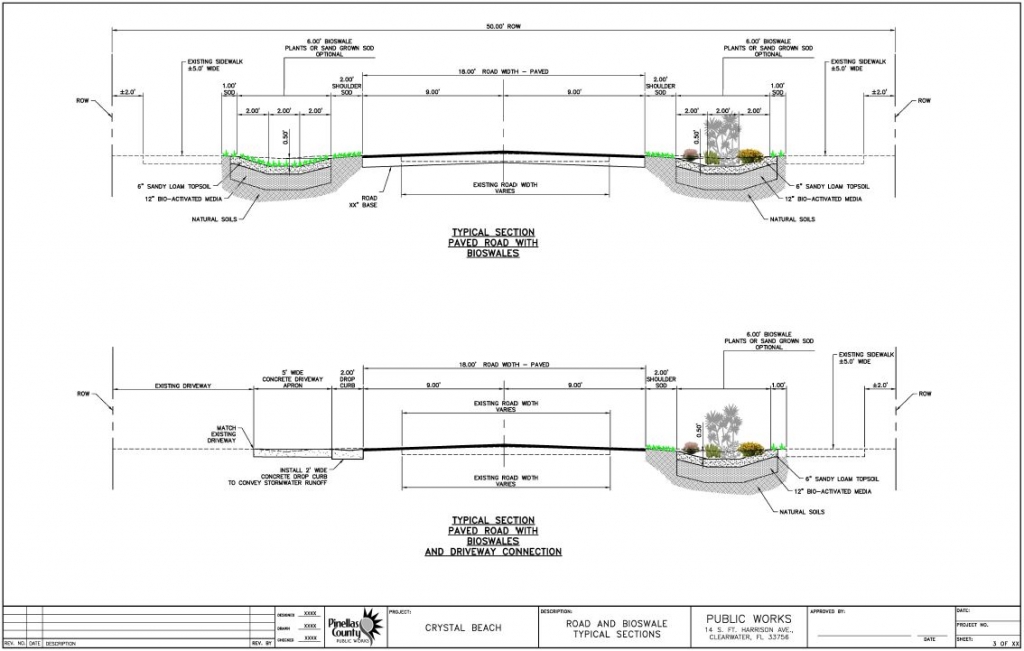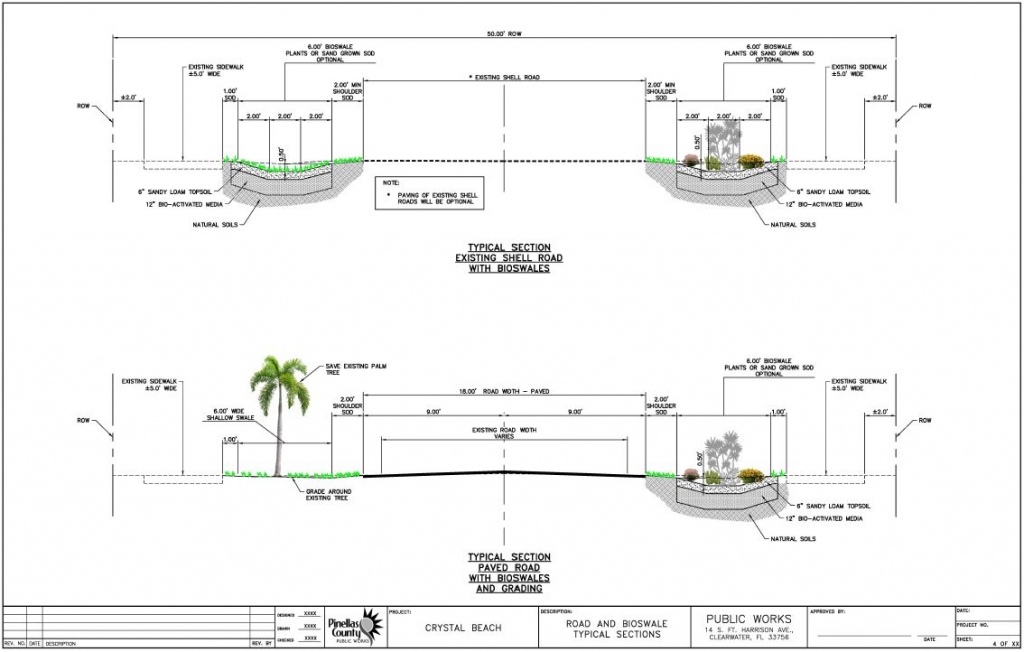Additional Resources for the Crystal Beach Drainage and Roadway Improvements
The need for drainage and roadway improvements in the project area is well documented. In 2008, the Pinellas County developed preliminary plans to address these issues. However, the project was not completed due to insufficient funding.
In September 2018, the Board of County Commissioners approved funds to complete a Project Development and a Preliminary Engineering Study for this area. County staff has developed a conceptual plan for drainage and roadway improvements. The plan began by referencing the 2016 Crystal Beach Overlay to ensure the elements of the project would be consistent with the community vision.
Important elements of the plan include preserving the community’s natural and historic features such as Live Oak Park, the Gulf Shore Park path, mangrove and estuary habitats and maintaining the coastal “Old Florida” character of the community through the use of native landscaping.
Stormwater Elements
Stormwater improvements include a network of inlets, pipes and swales (shallow ditches) that collect and carry stormwater runoff away from homes, yards and streets and provide treatment before discharging to coastal waters. This plan replaces existing deep ditches with either swales or swales over pipe which will improve stormwater management as well as roadway safety.
Bioswales that are designed to receive and treat stormwater runoff before discharging to St. Joseph’s Sound or Avery Bayou are proposed along the South Gulf Drive right-of-way and along some roadways. Bioswales provide infiltration, conveyance and treatment of stormwater runoff and are designed to return to dry conditions 72 hours after rainfall. Bio-sorption Activated Media (BAM), a soil amendment technology composed of natural and recycled materials, may also be utilized in the bioswales to provide enhanced pollutant removal.
Roadway Elements
Roadway improvements include repaving for paved roads that have not recently been resurfaced. Paving of shell roads is optional and will be determined by the homeowners along the road segment. Typical roadway sections show the proposed width for paved and shell roads as well as potential combinations of grassed and planted swales. Existing trees in the right-of-way will be retained whenever practicable.
Other Elements
Additional needs such as utility improvements may also be identified through the Project Development and Preliminary Engineering Study phases.
Conceptual Plan
The conceptual plan for stormwater and roadway improvements in the project area are depicted below. The proposed infrastructure shown is conceptual and will be refined in the Preliminary Engineering Study phase and through public input.

